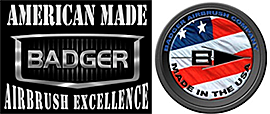
When the F-105 Thunderchief entered service in 1958, it was the heaviest single-engine combat aircraft. Today, the F-105 remains history’s heftiest fighter, weighing close to 50,000 pounds (23,000 kg). It also packed a heavy punch-up to 14,000 lb of ordnance. Despite its weight, the F-105 could still achieve Mach 2 speeds. The Thunderstick II variant was equipped with and upgraded radar and target acquisition set that allowed it to bomb from 15,000 feet with incredible accuracy. This kit features a detailed cockpit with pilot figure and waterslide decals.
- 85-5866
- Skill Level 2
- Scale: 1/48
- Length: 16-7/8″
- Height: 5″
- Wingspan: 8-3/4″
- Parts: 87
- MSRP: $22.99 USD

Another month, another aircraft model kit from Revell. This time is the retooled Revell F-105D T-Stick II kit # 85-5866 previewed in pictures here. As previously stated, the kit has a mix of raised and receded panel lines. The version of the 1/48 Thunder Stick II was only available thru some kit modification and an aftermarket resin spine. Revell took the original mold and retooled it to bring us this version without the hassles and expense.
The panel lines on the newly tooled spine are receded and the fit of the fuselage halves are good. If you take the time to join the fuselage halves in small segments rather than all of it, it will minimize sanding and filling later. This means also that we’ll loose less of those raised panel lines. The same applies to those 750 and 500 lbs bombs. The cockpit fit is very simple. However the front wheel well might leave a gap under the fuselage. To overcome this, I opened a hole on the nose front. I inserted a wooden dowel thru it, forced the wheel well down and with some CA glue and kicker the problem was solved. The remaining hole will be covered by the radome.
The F-105D Thunderstick II was developed during the Vietnam conflict but never saw action. Taking some artistic license, I took the liberty of weathering this aircraft as if it has been deployed. Testors Acryl colors FS-3622, FS-30219, FS-34102 and FS-34079 were used to paint this aircraft kit. A home made black oil wash was applied on the underside and some ”Soot” from Tamiya’s Weathering Master sets. The top of the finished model looked too bland. After giving the kit a coat of Testors DullCote, I used a Fine Sanding stick over the raised panel lines. This brought the dark green color over the tan areas. Once the model is clean, it leaves a nice gunky whitish finish in some areas. They look very nice as weathering effect, but in this case it would have been overkill for the Thunder Stick. To get rid of the whitish finish, simply apply another coat of DullCote and the effect is gone.
The decal set was a bit of a hit and miss. Some worked fine while other wouldn’t stop showing some silvering on 2 previous coats of Gloss Cote from Testors. They were also very stubborn to Microsol and even to the hotter Walters Decal Solution. It could have been a bad decal sheet and hard to say that this is the production norm. The clear canopy needs some work should you plan on having this model built with the canopy in the closed position; If not, Fugget about it 😉
This was a nice and fun build. A very affordable option for ‘Thud’ fans. This bird is big, have some room on your shelf ready. Recommended!













































Nice..how do you get your panels lines to look so sharp?
Hutch
Howdy Dale, I happened to be on-line early as well 🙂
I mentioned above how I did it but here ago a bit more detailed. This is a technique I experimented with on this model. Basically is inverting the camo pattern. Where the final color is to be tan, spray with green and where green goes, spray with tan. It doesn’t have to be perfect.
On top of that, you will paint your final camo pattern. Once the paint process is done, you will buff the panel lines with a fine sanding stick. In this case, I used the Red (Fine) sanding stick from Squadron. It is better if you do it with the sanding stick wet. If you sand in a flat orientation over the panel lines, the green color under the tan areas will show up. When the underlying color shows up, it is time to stop sanding that area. Once your done, clear the slurry from the sanding process and seal it with Dull Cote.